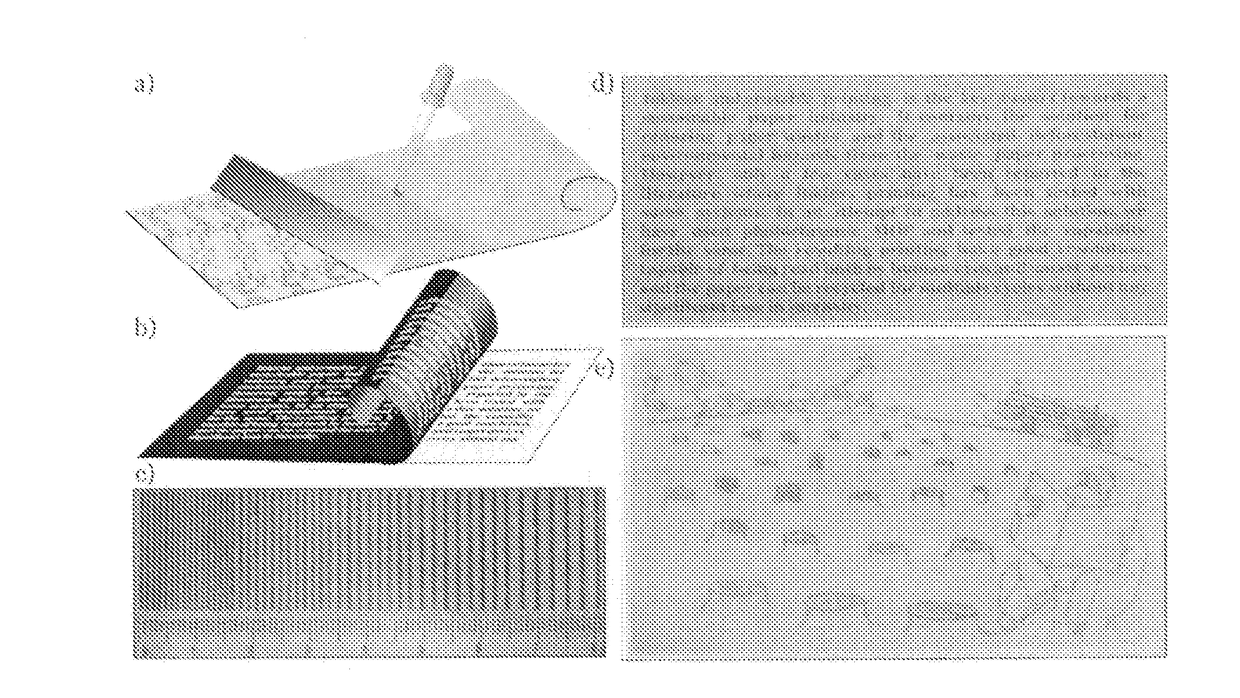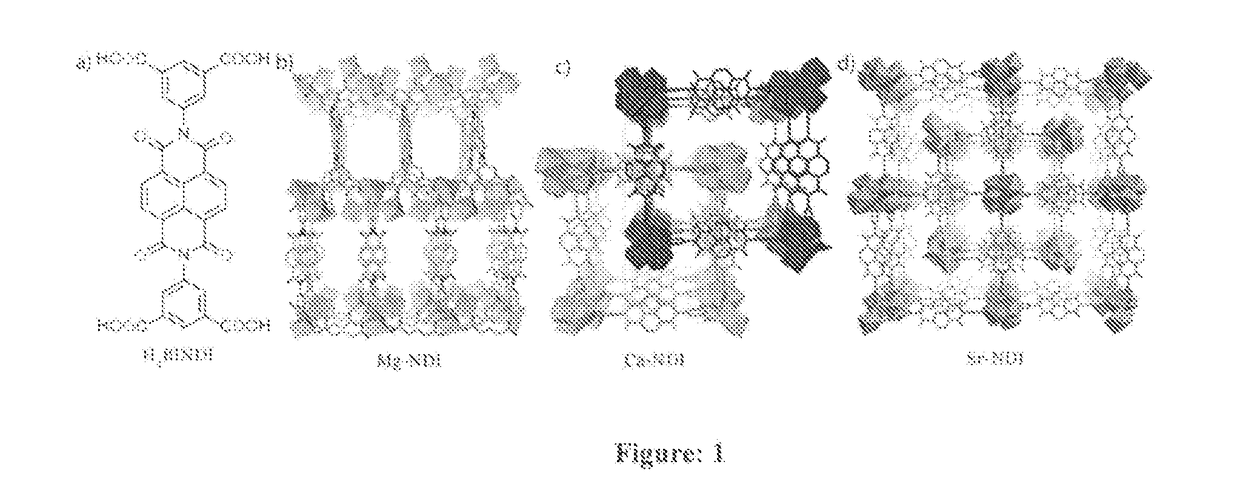Photochromic metal organic frameworks for inkless and erasable printing
a technology of inkless and erasable printing and metal organic frameworks, which is applied in the directions of printing, duplicating/marking methods, organic chemistry, etc., can solve the problems of complex and disordered process, inability to print, and inability to make its way into
- Summary
- Abstract
- Description
- Claims
- Application Information
AI Technical Summary
Benefits of technology
Problems solved by technology
Method used
Image
Examples
example 1
of BINDI Ligand and Metal Organic Framework (Scheme 1)
[0083]N,N′-bis(5-isophthalic acid)naphthalenediimide (H4BINDI) was synthesized following a previously reported procedure in the literature. 1,4,5,8-naphthalene-tetracarboxylic acid dianhydride (6.70 g, 25.0 mmol) was taken into a 250 mL round bottomed flask and suspended in 125 mL acetic acid. The mixture was stirred for 10 min. To this solution, 5-aminoisophthalic acid (9.05 g, 50.0 mmol) was added and the resulting suspension was allowed to reflux for 12 h. The reaction was cooled down to room temperature and 100 mL of water was added to precipitate the product. The resultant product was collected by filtration and washed with ethanol. The obtained solid was dried in vacuum to yield 12.0 g of off-white solid (isolated yield=12.0 g, 77%). The compound was recrystallized from DMF as an off-yellow material (isolated yield=10.5 g, 67%).
example 2
of Sr-NDI
[0084]The needle shaped crystals of Sr-NDI MOF were synthesized by reacting N,N′-bis(5-isophthalic acid)naphthalenediimide (H4BINDI) (21 mg, 0.035 mmol) with Sr(NO3)2 (24 mg, 0.093 mmol) in 4 mL DMF and 0.2 mL HCl (3 N) at 90° C. for 24 h. Needle shaped colourless crystals were collected from the reaction vial and washed with dry DMF and preserved for further applications and characterizations.
example 3
of Mg-NDI
[0085]Mg-NDI were also synthesized following the same reaction protocol. In a typical reaction, 21 mg (0.03 mmol) of BINDI ligand and 24 mg (0.09 mmol) of Mg(NO3)2.6H2O were reacted in a mixture of 4 mL DMF and 0.2 mL of 3N HCl at 90° C. for 36 h. The plate like crystals, thus obtained were then collected and washed with DMF.
PUM
| Property | Measurement | Unit |
|---|---|---|
| temperature | aaaaa | aaaaa |
| temperature | aaaaa | aaaaa |
| retention time | aaaaa | aaaaa |
Abstract
Description
Claims
Application Information
 Login to View More
Login to View More - R&D
- Intellectual Property
- Life Sciences
- Materials
- Tech Scout
- Unparalleled Data Quality
- Higher Quality Content
- 60% Fewer Hallucinations
Browse by: Latest US Patents, China's latest patents, Technical Efficacy Thesaurus, Application Domain, Technology Topic, Popular Technical Reports.
© 2025 PatSnap. All rights reserved.Legal|Privacy policy|Modern Slavery Act Transparency Statement|Sitemap|About US| Contact US: help@patsnap.com



